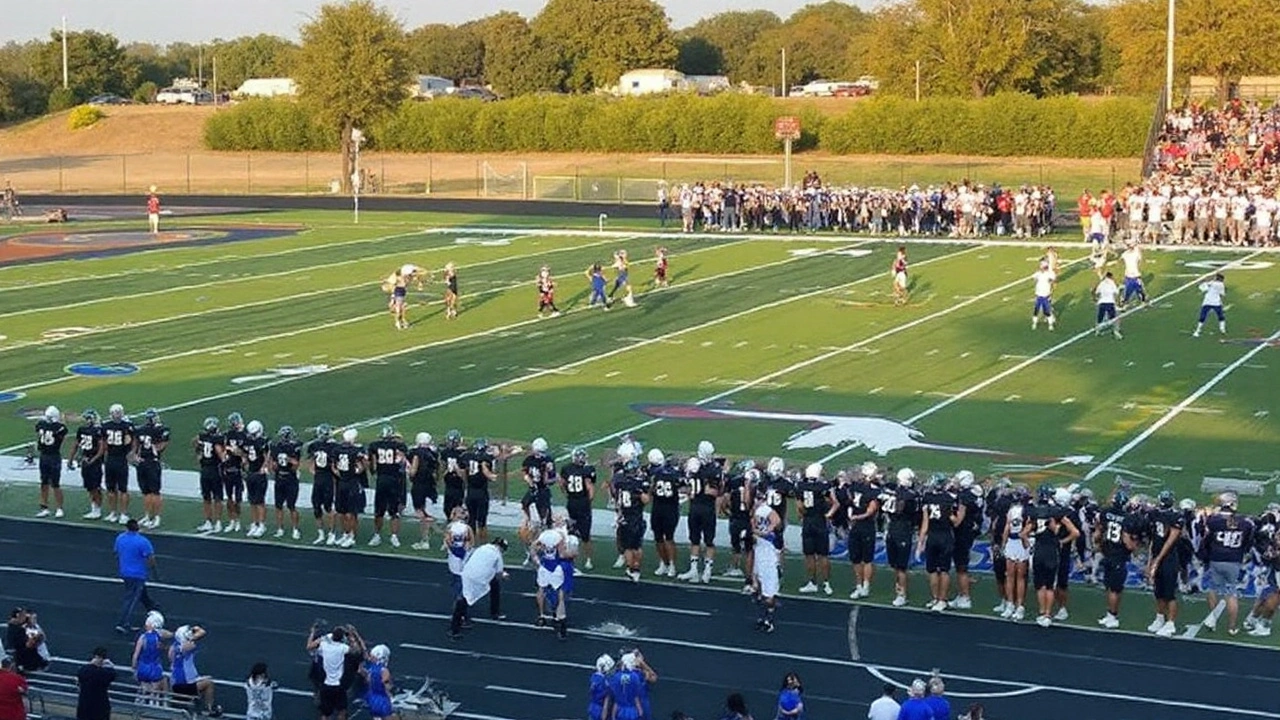The score was 40–27 at halftime. The crowd had just watched Graham pile up 300 rushing yards in two quarters. Then the band music faded, deputies arrived, and the stadium fell quiet. A Friday night high school football game between the Chiefs and the Raiders at Graham was halted at the break after the Champaign County Sheriff’s Office responded to an incident that stopped play.
Both teams had traded big plays through an up-tempo first half, the kind of track meet that leaves defensive coordinators scribbling on clipboards. The lead belonged to the side credited with Graham’s rushing total, and momentum seemed to be building for a wild finish. Instead, halftime stretched on, officials met with school administrators, and the call came down: no second half.
What we know so far
According to on-site information available Friday night, the Champaign County Sheriff’s Office became involved during the halftime period. The nature of the incident wasn’t released at the time, but it was serious enough that school officials and game staff decided not to restart the contest. No timeline for resuming play was announced on the field.
There was no immediate public explanation regarding whether the situation was inside the stadium, in the surrounding area, or unrelated but close enough to affect game operations. Announcements to the stands were limited to safety and dismissal instructions, and the teams did not return from the locker rooms to warm up for the third quarter.
From a competitive standpoint, the opening half was a blur. Graham’s ground attack sliced through for 300 yards before the break, and the scoreboard reflected it: 40 points in two quarters is a statement in any league. The Raiders and Chiefs kept the pace, answering with explosive plays of their own to reach 27 by halftime and keep the game within reach. The stoppage froze all of it in place.
Security-led interruptions at prep games are rare, but not unheard of. Weather delays—lightning in particular—are the usual culprit on autumn Fridays. This was different: a law enforcement response during halftime, followed by a full suspension. In those cases, the call rests with the host school’s administration in consultation with officials and law enforcement, with safety taking priority.

What happens next for the teams
When a game is halted at halftime for non-weather reasons, several options are typically on the table. The governing body and the schools coordinate on the restart plan, taking into account safety, logistics, and fairness to both teams. Common outcomes include:
- Resuming the game from the point of interruption, keeping the halftime score and team timeouts.
- Rescheduling the second half for a new date, often within the next few days if facilities, officials, and security can be arranged.
- Declaring the game a no-contest if rescheduling isn’t feasible or if policy requires it given the circumstances.
- In rare cases, awarding a forfeit if one team is unable or unwilling to continue under the rules.
Administrators also have to manage the practical stuff—contacting officials’ assigners, lining up security, planning crowd control, and communicating with families. Band schedules, cheer teams, transportation for students, and youth nights or senior recognitions—all of it gets reshuffled if the game restarts on another day.
For the players, a stop like this is jarring. You’ve just put up 67 combined points in a half, adrenaline is high, halftime adjustments are sketched out, and then you’re told to pack it in. Coaches will spend the weekend treating film of the first half as a standalone chapter, with an eye on whether they’ll need to pick up at 40–27 or reset for something else.
From a record-keeping angle, stats from suspended games usually stand, but whether they become official can depend on if the game eventually reaches completion. If the second half is played later, those first-half numbers remain intact and merge into the final box score. If the game never restarts and is ruled a no-contest, the numbers may be kept in team archives but not always in official season totals—policy varies by league.
Parents and fans often ask about tickets and entry if there’s a restart. Most schools honor original stubs for the resumed portion, but the exact policy can differ based on costs incurred for staffing and officials. Expect the host school to share clear guidance once a plan is set.
The bigger picture is about safety procedures at school events. Stadium staffs train for evacuations, sheltering for weather, and coordination with police or deputies for security-related disruptions. When deputies are called and administrators choose to stop a game, it signals a decision made with caution at the center. It also means information can take time—especially if there’s an active investigation or minors involved.
As of late Friday, no additional details were publicly available about the incident that brought deputies to the stadium, and no makeup plan had been announced at the field. The only certainty is this: a high-scoring game that felt like a sprint to the finish is on pause at 40–27, with 300 rushing yards already on the ledger and an entire second half waiting—if and when it’s safe to play it.
